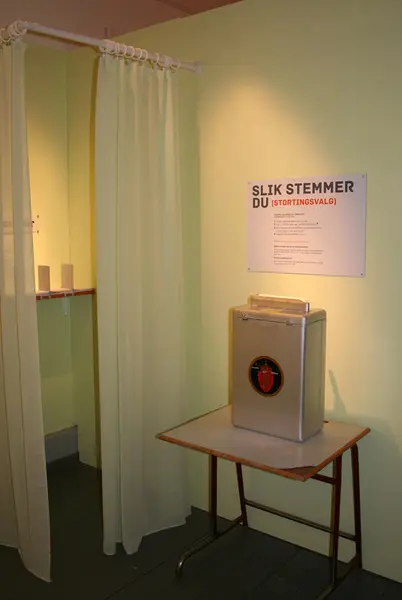- 1/1
Stemmeurne fra 2013 Lisbeth A. Chumak | Kvinnemuseet, Anno
Women who earned or owned a certain amount of money could vote and be voted for in local elections. The feminists worked purposefully towards women into local government. About 100 women were elected this first year, six of them in Hedmark. Some newspapers were negative, and complained that the decision to give women the vote had been rashly made.
In 1904, the women of Kongsvinger organized their own non-political party, but did not receive many votes in the election, and won no representative spots. It was also a problem that many women did not vote in the elections. Feminists kept fighting for universal suffrage, employing a wide variety of arguements. One of them was that as long as only wealthy women could vote, men could be judged as poorer by their peers if their wife was left at home on election day.
Who votes today?
In 2013, c. 77% of the population voted in the national election. For a long time, more men than women voted, but this changed in the 1980s. Now, women are more active voters than men, and the big differences are found elsewhere.
Young people are less likely to vote, only 55% of first time voters used their vote in 2005. People of non-Norwegian backgrounds are also less likely to vote in elections. Only 45% of Norwegian citizens of non-Western heritage voted in 2001.
In local elections, all foreign citizens can vote, provided they've lived in Norway for three years continuously. Only Norwegian citizens can vote in the national elections.
